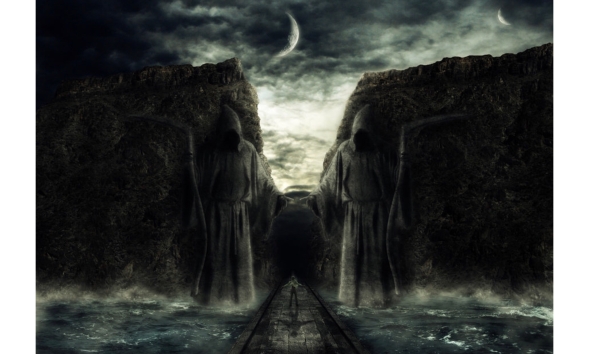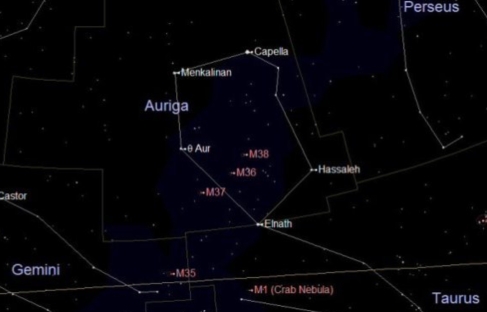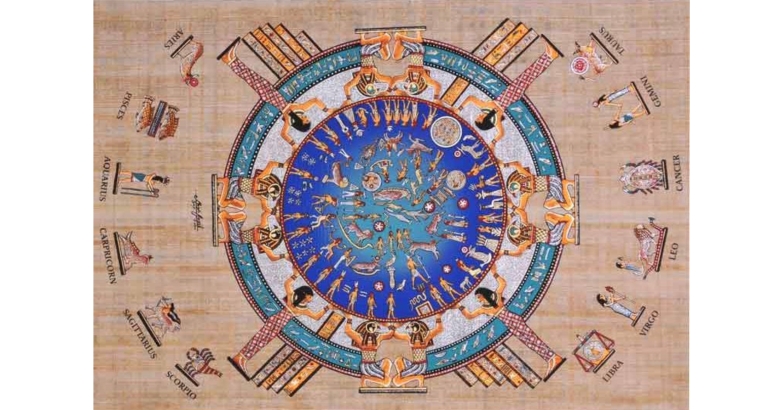Isaiah 40:10-11
“Behold, the Lord God shall come with a strong hand,
And His arm shall rule for Him;
Behold, His reward is with Him,
And His work before Him.
He will feed His flock like a shepherd;
And His arm shall rule for Him;
Behold, His reward is with Him,
And His work before Him.
He will feed His flock like a shepherd;
He will gather the lambs with his arm.
And carry them in His bosom,
And gently lead those who are with young.”
And carry them in His bosom,
And gently lead those who are with young.”

The third and final decan, or minor constellation, of Taurus is Auriga, The Shepherd. He is pictured as holding a ewe with his left arm. Usually pictured on that same are are two young lambs, one of which is looking back at the fierce Taurus. The other lamb is looking up into the face of the Shepherd.
In his other hand, Auriga is holding a pair of reins. These correspond to the bands of Pisces under the control of Aries. This links the two stories together depicting the One holding the reins, guiding and protecting the Fish people. God’s people, however, are now pictured as sheep rather than fish.

The Good Shepherd.
Of all the portrayals of Jesus in the scriptures, the Good Shepherd of the sheep is by far the Holy Spirit’s favorite! It comes as no surprise that there should be such a picture in the night sky. But why the shift from fish to sheep to describe God’s people? They are a higher form of life indicating there has been spiritual growth.
Fish are attracted by the most basic of needs: Food. They have to be tricked by a worm on a hook and thrown into the boat. This is how we all come to Christ. We don’t even know our need for a Savior. He draws us to Him. Some “Fish” are harder to hook and fight a lot more, but eventually get caught. The ones that break the line and swim away are free to be food for larger sea life.
Unlike fish that are caught, sheep follow their Shepherd willingly. Though they are often described as “Dumb” because they either do things that are not good for them or unsafe, there is one thing they do very well: They know thevoice of their Shepherd and WILL NOT FOLLOW ANOTHER.
Like the opening scripture declares, this Shepherd is both good and gentle. The ewe, being female, represents the Church. The young, weak, and innocent lambs demonstrate how gently He deals with even the weakest of believers. Though some may look back at the frightening sight of the charging Taurus, they need fear no evil, for they are safe in the Shepherd’s arms.

“Yea, though I walk through the valley of the shadow, I will fear no evil, for thou art with me.” Psalm 23:4
Jesus says of Himself, “I am the good shepherd; and I know My sheep, and am known by My own,” in John 10:14.
The Greeks didn’t know what to make of this gentle Shepherd in the night sky. They were no doubt accustomed to “gods” of their own making that were very angry and vengeful. So, though they recognized Auriga, they didn’t understand him.
This is the One Who laid down His life for the sheep. The tip of one of the horns of Taurus piercing His right heel depicts this self sacrifice on behalf of His own.

Ancient Names For The Sign.
In the opening passage, the word used for “Shepherd” is “Auriga.” Because the Shepherd didn’t quite fit their narrative, they called him, “Haeniocho: The Driver, or The Charioteer.” They may have seen the reins in his right hand and assumed he was driving a wagon of some sort. The British to this day call him “The Wagoner,” most likely because the Latin meaning of the name, “Auriga,” means “The Conductor of the Reins.”
No doubt, the English got the idea that had was the figure drove a chariot came from the reins in his hand. Like the ancient Greeks, they also did not make the connection with these reins and the Bands of the Pisces constellation. They simply thought the reins in his hand had something to do with a horse’s rein.
Let’s look at the names of the stars to see if they answer the question: “Is it a Shepherd or is this a Charioteer?”

Ancient Names Of The Stars.
Capella, the star at the top of the figure above, is the brightest star in this figure. It means, “She goat,” and comes to us from the Latin. It actually has a Hebrew root word, “Capra,” which means “Atonement.” Atonement means “Covering,” as in covering for sins.
The Hebrew name for this star is “Alioth: The Ewe or she goat.” It is a picture of the Good Shepherd removing the reins from her neck, setting her free to be with or “In Him.” HALLELUJAH!
The next star in order of magnitude, located in the Shepherds right bicep, bears a Chaldean name: “Menkalinon,” meaning “The Band” or “Chain of The Goats or Ewes.” The lambs Auriga is holding are free and safe from all attacks of the enemy in His arms.
There are two Arabic star names that further shed light on this figure. The first, “Maaz,” means “The flock of goats or kids.” That brings to mind the verse in Luke 12:32 which says, “Do not fear, little flock, for it is your Father’s good pleasure to give you the kingdom.”
The next Arabic-named star is “El Nath: The wounded or The slain.” You’ve seen this name in two other constellations: Aries and Taurus. God reiterates the great sacrifice and price that was paid to obtain our freedom.
Another star bearing an Arabic name is “Aiyuk.” It means “Wounding in the foot,” as Jesus’ foot was bruised in crushing the head of the serpent, again reminding us that we are bought with a price.

The Denderah.
As usual, the Egyptian take on this sign adds even more light. Their name for this constellation is “Turn: The Sceptre, The Power.” They pictured “Turn” as carrying a scepter. The upper part of this scepter is the head of a lamb, but the lower part is in the form of a cross.
The animal’s head depicts His coming again; but it is the Egyptian view of the cross that is most startling! Bear in mind, now, that crucifixion as a form of execution was not in use at the time these stars and figures were named. They could only have known to call them by these names by Divine revelation.
To the Egyptians from earliest history, they saw the cross as having something to do with immortal life of the One to come. In hieroglyphics underneath this figure on the temple walls of Denderah is a name that identifies “Turn” as “One who subdues or tames.” Pretty descriptive!
We’ll learn more of this beautiful narrative in the next major star sign, “Gemini.” Please follow the link below: (Remember, they are mis-numbered.)
In the opening passage, the word used for “Shepherd” is “Auriga.”. Except it is Strongs number 7462(e) which is ra'ah.... Not Auriga.....
ReplyDeleteThat’s true very true. Even so, it is translated as “Shepherd.” The Shepherd’s name, “Auriga,” in the Mazzaroth story comes from the Latin and means, “Charioteer.” You see, most of the names of the constellations came from languages other than Hebrew. Nevertheless, their true meanings as they appear in the story remain constan, hence the seeming inconsistency.
ReplyDelete